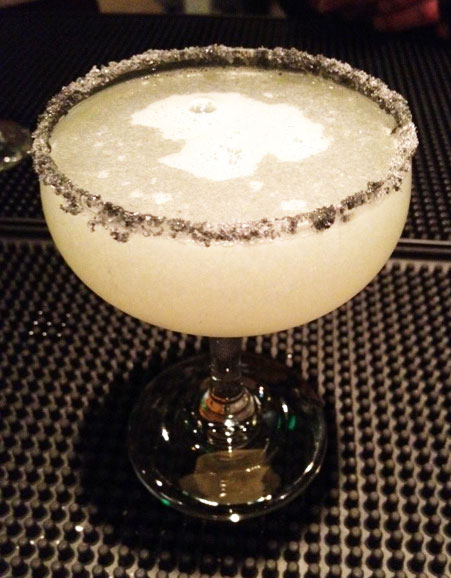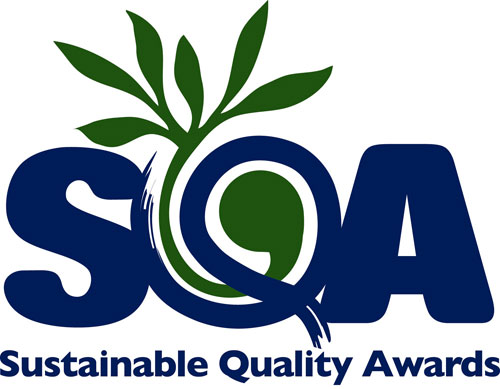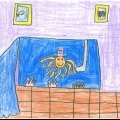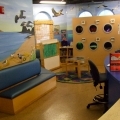They’re exotic, and not in a good way, but why should you care about weeds? If you want to hang on to your favorite local nature spots, constant maintenance and eradication of these non-native, invasive plants, a.k.a. weeds, is an absolute necessity.
Here’s a primer, written by Tim Rosenstein, Mountains Restoration Trust Project Manager, on the problem with weeds.
Plants will often have natural defenses that keep them from being eaten by anything that hasn’t developed the tools necessary to take advantage. Plus there are simply huge physiological differences between species, which means an insect that can feed on one part of one type of plant, say soft leaves, won’t be able to eat a different sort of plant with hard, waxy leaves.
The result of a diversity of plants then is a diversity of insects or varying specialty. Each plant supports a varying number of insects, some of which will feed on other plants, some of which will only feed on that plant. This diversity of herbivorous insects will then support a diversity of carnivorous insects, and the insects support small animals, which support other animals, etc., etc., you get the picture.
Weeds, because they evolved elsewhere, don’t support many insects. An infestation of weeds therefore decreases the amount and diversity of insects, which decreases the amount of small animals, which decreases larger animals, etc., etc., you get the same picture but this time in reverse. For a specific example the “common reed” Phragmites australis, an East Coast invasive that’s been studied extensively, supports 170 species of insects in its native Europe. Here in the U.S. it only supports five insect species.
Weeds Alter Natural Cycles
These “exotics” destroy habitat almost as completely as paving it over does. If weeds take over a landscape that area just isn’t going to support much wildlife, and it’s the interaction of wildlife and plants that make an ecosystem work (for more on this concept search the web for ‘ecosystem services’).
But that’s not all! Weeds can also change natural fire cycles, affecting the frequency and intensity of fires. Plus weeds interrupt natural succession cycles after disturbances like fire. When there’s a fire in a stand of coastal sage scrub, what naturally happens is the first thing to pop up are fire-following annuals like grasses and wildflowers, things you don’t see much except after a fire.
These will dominate for a few years and the area will effectively be like a grassland until other non-fire-following plants and shrubs start to come up; bigger, longer-lived plants that, while sometimes present in mature coastal sage scrub, are not very common. These plants will proliferate and become more common for a while but eventually the dominant plants (sages, buckwheat, coyotebrush and the like) will reassert themselves and suppress the other species. That’s how it normally works. When weeds are present however this is how it works: After the fire weeds sprout first and dominate everything forever and ever the end.
Weeds Starve Natives
OK, I’m being slightly dramatic. But only slightly. Here’s another problem with weeds: They suppress the germination of native seeds. Many weeds have allelopathic properties, meaning they produce chemicals that affect the lifecycle of other plants. So not only do weeds germinate more and get established earlier than natives, starving natives of water and nutrients, they chemically suppress the germination and growth of natives as well.
They also suppress the germination of native fungal spores. This is exceedingly important because much of our native plant life requires the help of what’s called mycorrhizal fungi in order to survive. It’s a symbiotic relationship– the fungi needs the plants and the plants need the fungi– and a hugely important biotic component in a Mediterranean climate such as ours. Weeds can suppress the germination of the fungal spores and the growth of the fungus itself, effectively killing the very soil they grow in, making it that much harder for any native to ever grow there again. So when I say: “Weeds sprout first and dominate everything forever and ever the end,” I’m just barely exaggerating.
Sometimes people will ask me why we don’t just let “nature take its course” and let the weeds grow until a balance is reached. The thing is invasive species take over, that’s why they’re called “invasive.” There is no natural process by which an ecosystem can rid itself of weeds. Habitat is degraded when they enter the system, outright destroyed when they dominate it.
It is actually very much like cancer in a body, there is no “balance” to be had; either you fight the weeds or you let them win, there’s not much in between. I don’t want to be too dramatic but next to habitat loss from development the second greatest cause of habitat destruction is invasive species. Weeds, those innocent looking plants from the other side of the world, are pretty much an ecological nightmare.
Next up: We answer the crucial question; “How did weeds get here in the first place?”
Ready to help rid Malibu Creek of these harrowing invasives? Sign up now to volunteer on Sunday, February 10. If you can’t make it, no worries. Check Heal the Bay’s Calendar of Events for upcoming restorations.



 The Basement Tavern
The Basement Tavern

 Peer into the “holdfast haven” exhibit, for example, for a close look at the root-like structure, known as a holdfast, which is the anchor of the giant kelp. Chances are a keen eye will see a collection of crustaceans called Hemphill’s kelp crabs. Their first pair of walking legs is exceptionally long, and covered with numerous curved hairs. They decorate this pair of legs with kelp, grass, algae and other organisms. When feeling threatened, this crab will raise one of its adorned legs and hold it horizontally as a shield between itself and a predator. The Hemphill’s kelp crabs were just added to the holdfast, also home to brittle stars, snails and other tiny organisms. Visitors are charmed by their antics, but at least weekly someone will ask: “whatever happened to that octopus that flooded the Aquarium?”
Peer into the “holdfast haven” exhibit, for example, for a close look at the root-like structure, known as a holdfast, which is the anchor of the giant kelp. Chances are a keen eye will see a collection of crustaceans called Hemphill’s kelp crabs. Their first pair of walking legs is exceptionally long, and covered with numerous curved hairs. They decorate this pair of legs with kelp, grass, algae and other organisms. When feeling threatened, this crab will raise one of its adorned legs and hold it horizontally as a shield between itself and a predator. The Hemphill’s kelp crabs were just added to the holdfast, also home to brittle stars, snails and other tiny organisms. Visitors are charmed by their antics, but at least weekly someone will ask: “whatever happened to that octopus that flooded the Aquarium?”